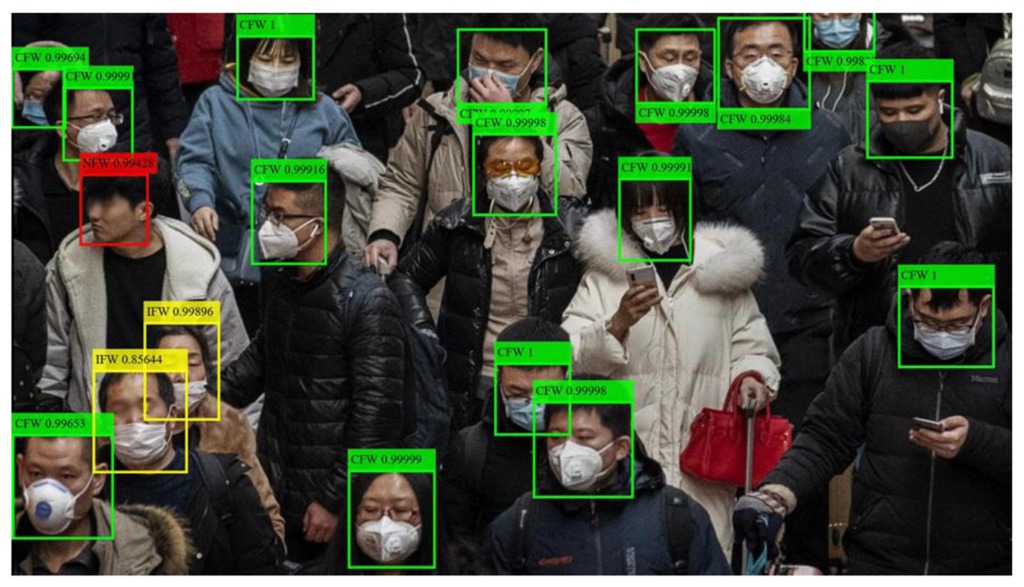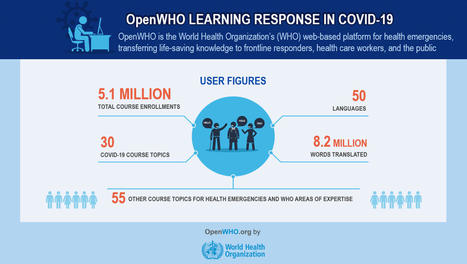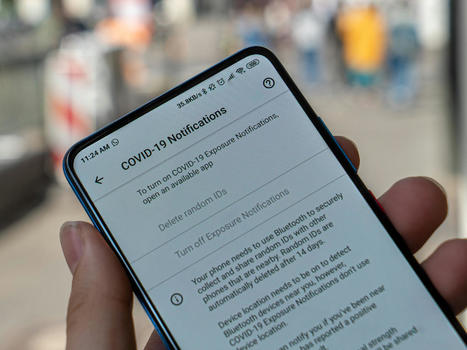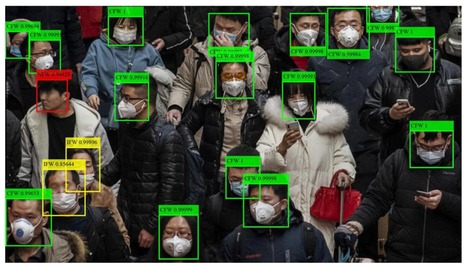covid management

The World Health Organization (WHO) expanded access to web-based learning for COVID-19 through its open-learning platform for health emergencies, OpenWHO.
Throughout the pandemic, OpenWHO has continued to publish learning offerings based on the WHO’s emerging evidence-based knowledge for managing the COVID-19 pandemic.
This study presents the various findings derived from the analysis of the performance of the OpenWHO platform during the pandemic, along with the core benefits of massive web-based learning formats.
The following factors have led to the success of this unprecedented training and learning response in response to the current pandemic:
- Equity: the design of learning activities is based on the principles of equity to health, supported by equity in access to education, and learning for health. Cost and digital barriers often inhibit those who most need knowledge from accessing it. The elimination of these barriers has been the fundamental premise of the WHO’s health emergency training response. Equitable access to critical health emergency knowledge helps provide core learning in the native languages of the most vulnerable populations and includes sign language.
- Accessibility: web-based learning enables participants with even basic technology to access learning from almost anywhere in the world. OpenWHO courses are globally successful because they are free, self-paced, low-bandwidth adjusted, downloadable and portable, and available on any device. Offline options increase access even further.
- Flexibility: self-paced mass web-based learning delivery enables individuals to learn at their own speed, at their preferred time, and in their preferred place. It builds on and provides for the learners’ preferences and availability.
- Learner-centricity: user-friendly options allow individuals to choose formats specific to their learning needs and provide the basis for more customized “just-in-time” learning experiences and continuous, lifelong learning.
- Quality: courses that are based on the latest scientific evidence and on WHO technical guidance and the use of adult learning techniques assure the quality of content and enhance learning.
This is the first time in the WHO’s history that a learning resource has been launched this rapidly in high-quality, globally accessible learning formats, which are widely and freely available on a massive scale to manage a health threat.
The pandemic has shown that web-based learning is no longer a temporary replacement for direct training, but rather a new way for more efficient and equitable learning.
The experience and findings reported herein provide guidance for any individual to be better prepared for subsequent instances where a major and fast learning response is required.
access the entire study report at https://publichealth.jmir.org/2021/4/e28945
Lire l'article complet sur : publichealth.jmir.org

Contact tracing apps are potentially useful tools for supporting national COVID-19 containment strategies. Various national apps with different technical design features have been commissioned and issued by governments worldwide.
Objective: Our goal was to develop and propose an item set that was suitable for describing and monitoring nationally issued COVID-19 contact tracing apps.
This item set could provide a framework for describing the key technical features of such apps and monitoring their use based on widely available information.
Methods: We used an open-source intelligence approach (OSINT) to access a multitude of publicly available sources and collect data and information regarding the development and use of contact tracing apps in different countries over several months (from June 2020 to January 2021). The collected documents were then iteratively analyzed via content analysis methods. During this process, an initial set of subject areas were refined into categories for evaluation (ie, coherent topics), which were then examined for individual features.
These features were paraphrased as items in the form of questions and applied to information materials from a sample of countries (ie, Brazil, China, Finland, France, Germany, Italy, Singapore, South Korea, Spain, and the United Kingdom [England and Wales]). This sample was purposefully selected; our intention was to include the apps of different countries from around the world and to propose a valid item set that can be relatively easily applied by using an OSINT approach.
Results: Our OSINT approach and subsequent analysis of the collected documents resulted in the definition of the following five main categories and associated subcategories:
(1) background information (open-source code, public information, and collaborators);
(2) purpose and workflow (secondary data use and warning process design);
(3) technical information (protocol, tracing technology, exposure notification system, and interoperability);
(4) privacy protection (the entity of trust and anonymity); and
(5) availability and use (release date and the number of downloads).
Based on this structure, a set of items that constituted the evaluation framework were specified. The application of these items to the 10 selected countries revealed differences, especially with regard to the centralization of the entity of trust and the overall transparency of the apps’ technical makeup.
Conclusions: We provide a set of criteria for monitoring and evaluating COVID-19 tracing apps that can be easily applied to publicly issued information. The application of these criteria might help governments to identify design features that promote the successful, widespread adoption of COVID-19 tracing apps among target populations and across national boundaries.
read the study at https://mhealth.jmir.org/2021/3/e27232
Lire l'article complet sur : mhealth.jmir.org

The enormous pressure of the increasing case numbers experienced during the COVID-19 pandemic has given rise to a variety of novel digital systems designed to provide solutions to unprecedented challenges in public health.
The field of algorithmic contact tracing, in particular, an area of research that had previously received limited attention, has moved into the spotlight as a crucial factor in containing the pandemic.
The use of digital tools to enable more robust and expedited contact tracing and notification, while maintaining privacy and trust in the data generated, is viewed as key to identifying chains of transmission and close contacts, and, consequently, to enabling effective case investigations.
Scaling these tools has never been more critical, as global case numbers have exceeded 100 million, as many asymptomatic patients remain undetected, and as COVID-19 variants begin to emerge around the world.
In this context, there is increasing attention on blockchain technology as a part of systems for enhanced digital algorithmic contact tracing and reporting. By analyzing the literature that has emerged from this trend, the common characteristics of the designs proposed become apparent.
An archetypal system architecture can be derived, taking these characteristics into consideration. However, assessing the utility of this architecture using a recognized evaluation framework shows that the added benefits and features of blockchain technology do not provide significant advantages over conventional centralized systems for algorithmic contact tracing and reporting.
From our study, it, therefore, seems that blockchain technology may provide a more significant benefit in other areas of public health beyond contact tracing.
more at https://publichealth.jmir.org/2021/4/e26460
Lire l'article complet sur : publichealth.jmir.org

Since the start of the pandemic, new technologies have been developed to help reduce the spread of the infection.
Some of the most common safety measures today include measuring a person’s temperature, covering your nose and mouth with a mask, contact tracing, disinfection, and social distancing. Many businesses have adopted various technologies, including those with artificial intelligence (AI) underneath, helping to adhere to the COVID-19 safety measures.
As an example, numerous airlines, hotels, subways, shopping malls, and other institutions are already using thermal cameras to measure an individual’s temperature before people are allowed entry. In its turn, public transport in France relies on AI-based surveillance cameras to monitor whether or not people are social-distancing or wearing masks. Another example is requiring the download of contact-tracing apps delivered by governments across the globe.
However, there are a number of issues.
While many of these solutions help to ensure that COVID-19 prevention practices are observed, many of them have flaws or limits. In this article, we will cover some of the issues creating obstacles for fighting the pandemic.
Issue #1. Manual temperature scanning is tricky
Issue #2. Monitoring crowds is even more complex
Issue #3. Contact tracing leads to privacy concerns
Issue #4. UV rays harm eyes and skin
Issue #5. UVC robots are extremely expensive
Issue #6. No integration, no compliance, no transparency
Regardless of the safety measures in place and existing issues, innovations are already playing a vital role in the fight against COVID-19. By improving on existing technology, we can make everyone safer as we all adjust to the new normal.
read the details at https://www.altoros.com/blog/whats-wrong-with-ai-tools-and-devices-preventing-covid-19/
Lire l'article complet sur : www.altoros.com





